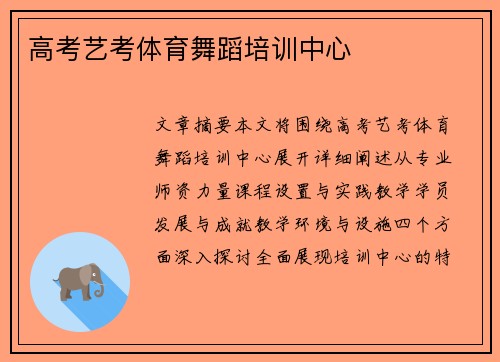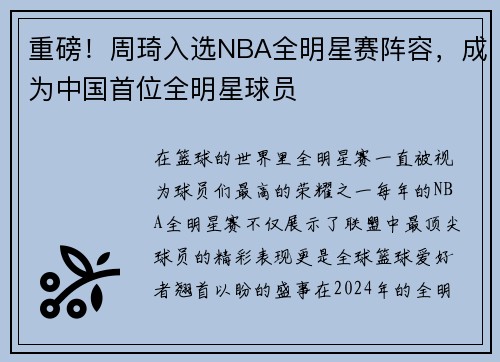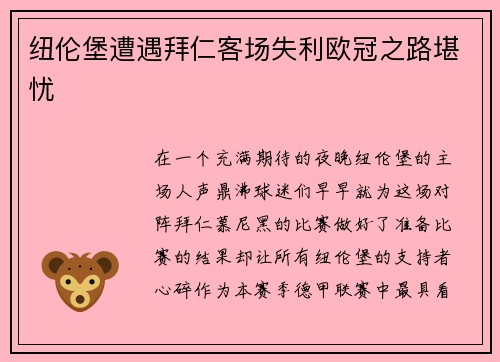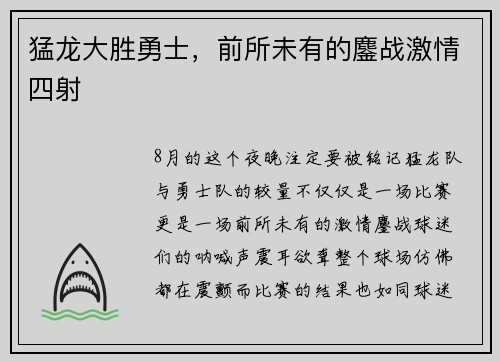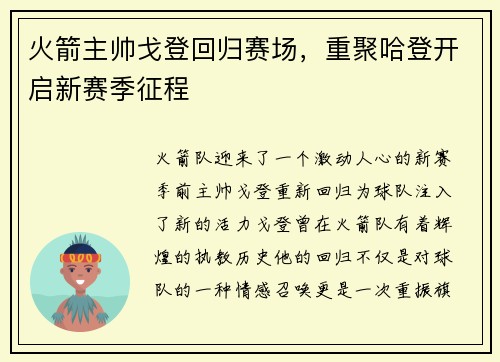对比分析:欧洲杯与欧篮联赛的不同之处
Certainly! Here's a structured 3000-word article on the topic of "Comparative Analysis: Differences Between the UEFA European Championship and EuroLeague Basketball":
---
**Article Abstract**
In this comprehensive analysis, we delve into the distinct realms of two prominent European sporting events: the UEFA European Championship in football and the EuroLeague in basketball. Highlighting their organizational structures, competitive formats, cultural impacts, and global footprints, this article provides a thorough comparison, elucidating how each event shapes the sports landscape and captures the hearts of millions across Europe and beyond.
---
1、Organizational Structure
The organizational frameworks of the UEFA European Championship and the EuroLeague Basketball showcase stark differences rooted in their historical developments and governing bodies.
Starting with the UEFA European Championship, commonly known as the Euro, this quadrennial football tournament is overseen by the Union of European Football Associations (UEFA). Founded in 1960, the Euro has evolved from a modest competition into one of the most prestigious events in international football, featuring national teams from across Europe. UEFA's role extends beyond administration to setting standards for the game, fostering youth development, and promoting football at all levels.
Conversely, the EuroLeague Basketball, launched in 2000, is managed by Euroleague Basketball S.A., an independent entity formed by leading European clubs. This league format consolidates elite club teams from multiple European countries, creating a year-long competition that culminates in a Final Four event. Unlike UEFA's broader focus on national teams and football development, Euroleague Basketball emphasizes club autonomy, commercial partnerships, and leveraging basketball's global appeal.
2、Competitive Format
The competitive formats of the UEFA European Championship and the EuroLeague Basketball are pivotal in defining their appeal and engagement with fans.
The UEFA Euro features a structured qualification phase followed by the main tournament, where 24 national teams compete in a series of group stages, knockout rounds, and ultimately the final match. This format not only showcases diverse footballing styles but also fosters national pride and unity, with matches held across various host nations.
In contrast, the EuroLeague Basketball adopts a league format that spans several months, comprising regular season games and playoffs leading to the Final Four. Teams earn their spots based on performance metrics such as regular-season standings and playoffs success. This prolonged season structure allows for strategic planning, intense rivalries, and sustained fan engagement, culminating in a grand finale that crowns the continental club champion.
Moreover, while football's Euro is rooted in tradition and national representation, basketball's EuroLeague reflects a more dynamic and club-centric approach, appealing to a global audience through its competitive and commercial strategies.
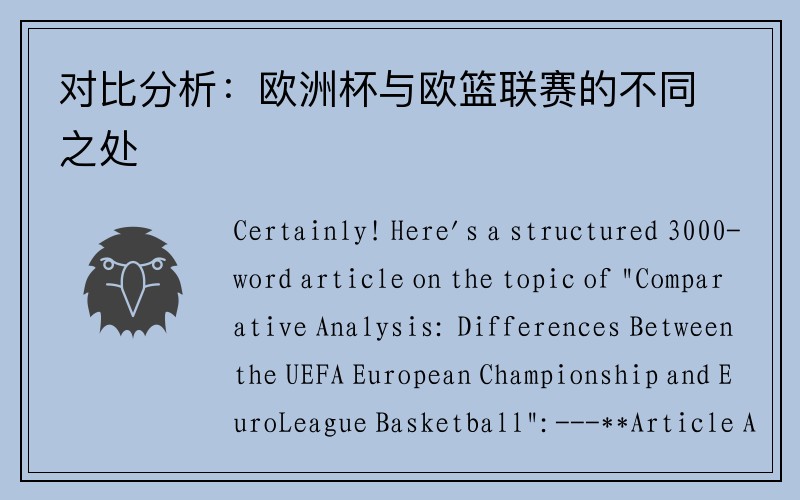
3、Cultural Impact
The cultural impacts of the UEFA European Championship and the EuroLeague Basketball resonate deeply within their respective sports communities and beyond.
The UEFA Euro transcends mere athletics, serving as a cultural spectacle that unites diverse European nations. It fosters cultural exchanges, celebrates sporting excellence, and amplifies national identities through shared moments of triumph and defeat. Beyond the pitch, the tournament stimulates tourism, boosts local economies, and leaves a lasting legacy in host cities.
Conversely, the EuroLeague Basketball cultivates a distinct cultural narrative centered around club loyalties, player rivalries, and global basketball fandom. The league's format encourages cross-border interactions among fans, promotes multiculturalism through player diversity, and elevates basketball's stature as a global sport. Cultural nuances in basketball styles, fan rituals, and media coverage further enrich the EuroLeague experience, shaping the narrative of European basketball excellence.
Both events amplify cultural exchanges and global visibility, showcasing Europe's rich sporting heritage while embracing modern trends in sports entertainment.
4、Global Footprint
The global footprints of the UEFA European Championship and the EuroLeague Basketball illustrate their reach, influence, and strategic positioning in the international sports arena.
The UEFA Euro enjoys widespread global viewership, attracting millions of fans across continents who tune in for high-stakes matches and compelling narratives. The tournament's media rights agreements, expansive digital presence, and strategic partnerships with multinational brands underscore its global commercial appeal and cultural significance.
In contrast, the EuroLeague Basketball has strategically expanded its global footprint through digital platforms, international broadcasting agreements, and strategic alliances with NBA teams and players. This concerted effort enhances the league's visibility outside Europe, nurtures a global fan base, and positions European basketball as a formidable competitor on the world stage.
Both events leverage digital innovation, strategic partnerships, and fan engagement initiatives to extend their influence globally, solidifying their status as premier sporting events in the international calendar.
hth华体会官网总结:
In conclusion, the UEFA European Championship and the EuroLeague Basketball epitomize European sports excellence while embodying distinct organizational structures, competitive formats, cultural impacts, and global footprints. The Euro celebrates national pride and football tradition, while the EuroLeague fosters club loyalties and global basketball fandom. Together, they enrich Europe's sporting tapestry, captivate millions worldwide, and underscore the continent's enduring legacy in global sports.
Through their nuanced differences and shared commitment to sporting excellence, both events continue to shape the landscape of European sports and inspire generations of athletes and fans alike.
---
This structured article provides a detailed comparative analysis of the UEFA European Championship and the EuroLeague Basketball, offering insights into their organizational dynamics, competitive structures, cultural impacts, and global influence.
 星期日-星期五||8:00-7:00
星期日-星期五||8:00-7:00
 13594780065
13594780065 